Namibia is my favourite country, and that says a lot because my job with Birding Ecotours has given me the privilege of travelling widely across the seven continents. I do always get drawn back to where I grew up, the vast and varied African continent. Africa has an allure like nowhere else; once it is in your blood it stays with you for the rest of your life. It is a scenically magnificent continent with the most superb, friendly and helpful people too. I also love the fact that while out birding you always have to be hyper-alert to avoid being eaten alive or trampled by dangerous megafauna such as crocodiles, elephants, hippos, rhinos, Cape buffalo, lions and leopards.
Within Africa, it’s not easy to pick a favourite country. There are other top contenders such as Uganda, a compact country the size of the UK, yet with a staggering bird list of 1,097 species, not to mention mountain gorillas, chimpanzees, big game parks and fabled places such as the source of the Nile, the “Mountains of the Moon”, Africa’s biggest lake, Victoria, the Royal Mile and Bwindi Impenetrable Forest. Then there are Tanzania and Kenya, quintessential Africa with stupendously mammal-rich and avian abundant savannah, mountain forests, the Great Rift Valley lakes and so much more. My home of South Africa with all its avian endemics and spectacular landscapes such as the Great Escarpment and Cape Fold Mountains, is also a top contender.

Sossusvlei, a good place for Dune Lark, Burchell’s Courser & other desirables, with the highest sand dunes on the planet as a backdrop
Why then is Namibia my top choice, not just in Africa but the whole world? Personal preference of course plays a role, but anyone can see it really is a must-visit country for any birder, and could easily be the number one choice overall for wildlife when one considers its coastal desert, mountains, one of Africa’s greatest game parks (Etosha) and the start of the Okavango Delta which then fans out into adjacent Botswana and which can easily be visited briefly on a Namibia-focussed trip. While Botswana is notoriously pricey, Namibia is spectacularly good value, especially now because of the weak Namibian dollar (pegged to the South African Rand; so South Africa also represents incredible value right now!).
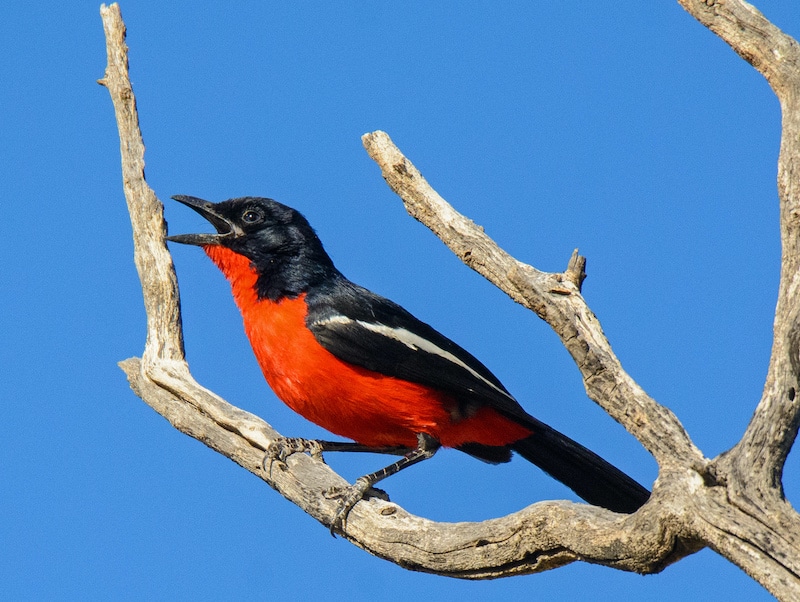
Crimson-breasted Shrike Laniarius atrococcineus – Namibia’s national bird & one of their many dazzling species
One of the main reasons why birders visit Namibia is to see the stunning, localised bird species that occur only in arid northern Namibia and southern Angola. These include really beautiful birds such as Cinderella Waxbill Glaucestrilda thomensis, Rockrunner Achaetops pycnopygius, White-tailed Shrike Lanioturdus torquatus, Bare-cheeked Babbler Turdoides gymnogenys, Monteiro’s Hornbill Tockus monteiri and the charismatic eponymous Herero Chat Namibornis herero among a host of others.
Fewer people realize that the Caprivi Strip of Namibia is a brilliant place to see the birds of the ‘greater Okavango Delta’ including Pel’s Fishing Owl Scotopelia peli, Slaty Egret Egretta vinaceigula, Chirping Cisticola Cisticola pipiens, Greater Swamp Warbler Acrocephalus rufescens, a plethora of incredibly colourful kingfisher species as well as bee-eaters such as the wonderful Southern Carmine Bee-eater Merops nubicoides. On any birding trip to Namibia, it’s also very easy to cross the border into Botswana to spend a couple of nights in the Okavango ‘proper’, and that’s what we as a company do on many of our Namibia-focused birding tours such as our ever-popular Namibia/Okavango/Victoria Falls birding and mammal tour, shown in the figure below:
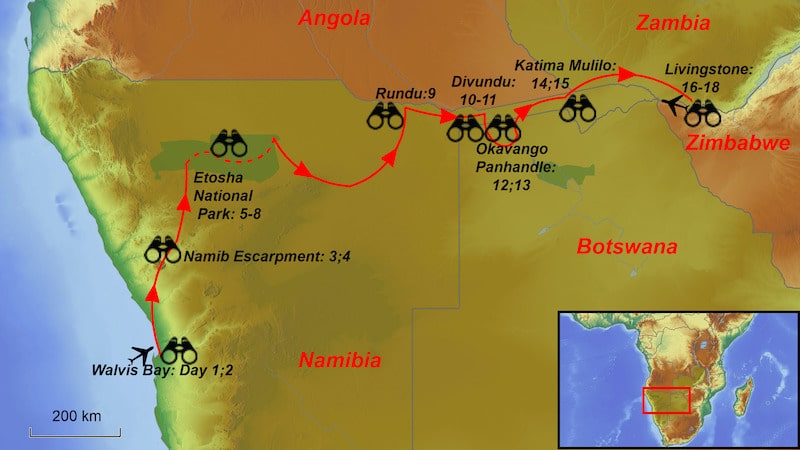
Our 18-day Namibia/Okavango/Victoria Falls tour starts on the desert coast, then moves north along the Namibian Escarpment, traverses one of Africa’s great game parks (Etosha), then continues eastwards through the Caprivi with a brief foray into the Okavango Delta of neighbouring Botswana before ending at Victoria Falls. This route usually generates just over 400 bird species and around 50 mammal species!
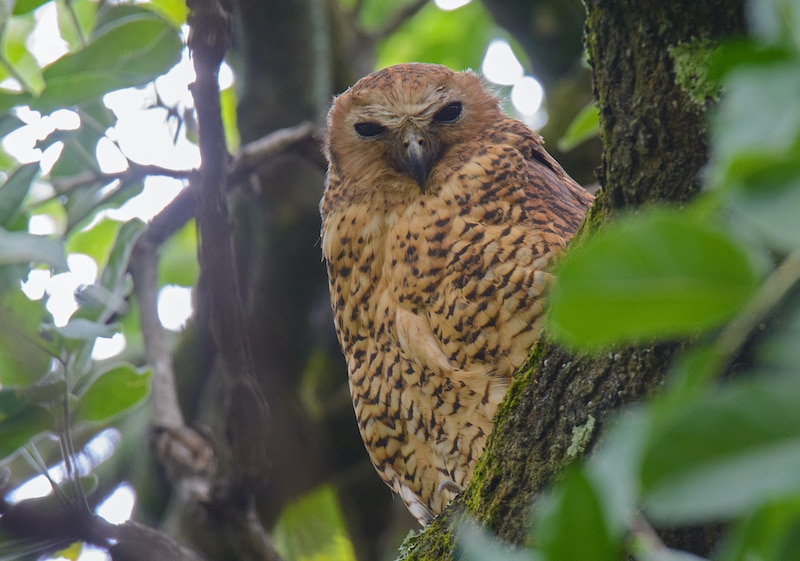
Namibia’s Caprivi Strip and the nearby Okavango Delta just across the border in Botswana, is the best place in the world to find Pel’s Fishing Owl!
My first visits to Namibia were family trips when I was still a child. I designed the itineraries according to the birds I personally wanted to see but my father said that it “…works well as it allows us to see the main wildlife sites and scenery without me having to plan the route”. More recently I have guided a lot of our tours to Namibia, but I still sometimes go on family holidays there. It’s not easy for me to get lifers in Namibia these days, although I did do a long-distance twitch with a good friend, the late John Neville, to a sewage works near the Waterberg Plateau National Park where there was a Garganey Spatula querquedula (a bird which I now sometimes see in England), then on the same trip we then drove the full length of the finger-like Caprivi Strip (wedged between Botswana in the south and Angola/Zambia in the north) from west to east to get acquainted with Namibia’s first Yellow-throated Leaflove Atimastillas flavicollis, a new bird for the important southern African listing region that includes six and a half countries (the northern half of Mozambique is excluded). While there is a brilliant road traversing the 280 mile long Caprivi Strip, one can’t travel too fast because of all the elephants! See details of this exciting twitch HERE I even managed to observe a Striped Crake Aenigmatolimnas marginalis, the often missed Sharp-tailed Starling Lamprotornis acuticaudus and other more difficult Namibian birds.
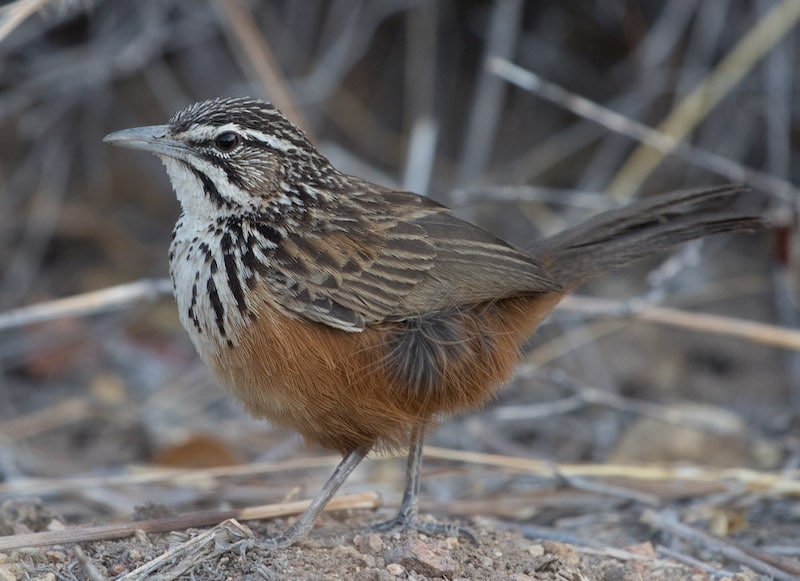
I like birds that are unique, attractively plumaged and with atmospheric songs: the liquid whistling of Rockrunners emanating from scree slopes is one of the characteristic sounds of the Namibian Escarpment. Hearing the sudden jumbled warble of the enigmatic Herero Chat around the base of the spectacular Spitzkop rock outcrop is another unforgettable experience.
While it’s rare for me to see any new species there I love seeing them all over again, and spending time with their big and small mammals. Namibia has a remarkable diversity of bird species and other wildlife; many people don’t realise what a range of habitats the country has, ranging from true desert through to the lush Caprivi Strip which boasts some massive rivers, not only the Okavango River but also one of Africa’s biggest rivers, the great Zambezi over which Victoria Falls plunges into a deep gorge a little to the east (on the Zambia/Zimbabwe border).
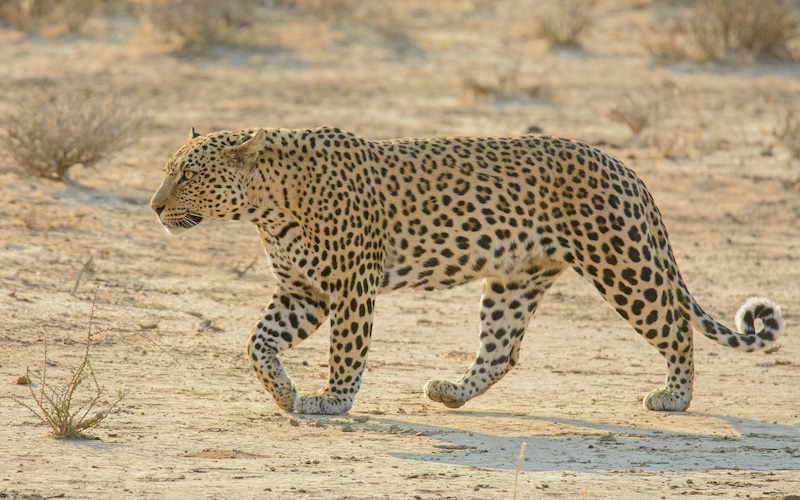
Namibia is great for Leopards (and Cheetahs and Lions)
Many things make Namibia my personal favourite destination, some already mentioned but also it’s such a big country with so few people, has rugged, magnificent landscapes and, a world away from the Namib Escarpment, it has great rivers, coastal sand desert and vast gravel plains, after one has moved away from the western desert into the Caprivi Strip. It undoubtedly has some of the best birds in the world, including some really localised and unique species. Moreover, it’s one of the very best countries for mammals in general, big cats in particular and the best place on earth to see Black Rhino.
There are important considerations when planning a trip to Namibia. The biggest danger are the wild animals that can eat or trample you, so if in doubt, stay in your vehicle. Namibian people are extremely friendly and helpful so there is very little danger from humans. It has an amazing infrastructure including some of the best paved roads in Africa. There are amazing nature lodges, but accommodation can be in short supply so do book at least a year in advance. Distances between towns and places to stay can be vast, so plan each day well. If you are using a birding or wildlife tour operator, make sure they’re legal in Namibia as many are not and that can invalidate insurance! We recommend that you please do read the details HERE before booking a guided tour.
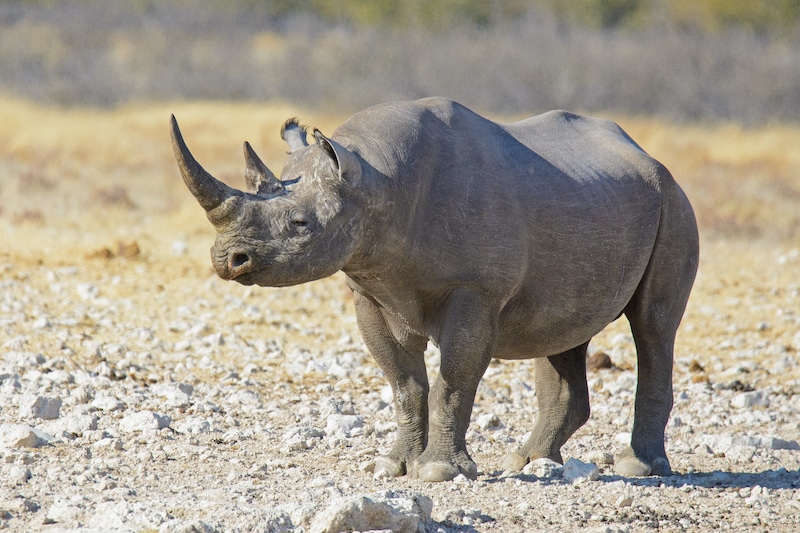
Black Rhinos are quite easy to see in Etosha National Park
Photos by Dominic Rollinson & Dylan Vasapolli
